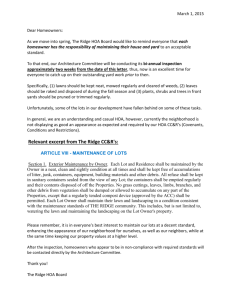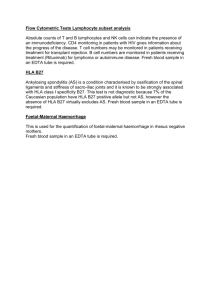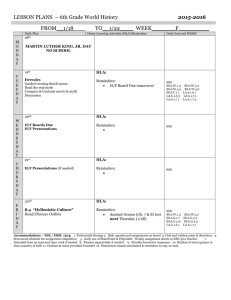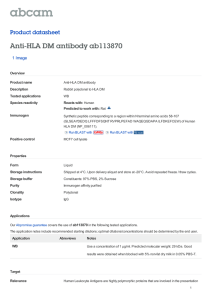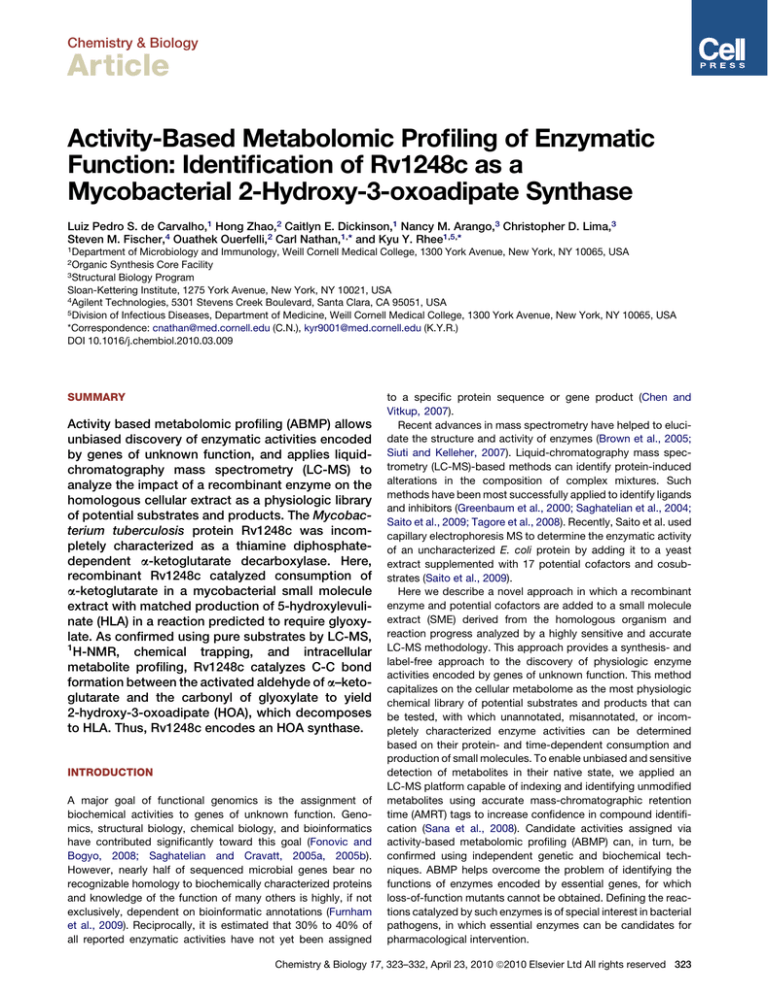
Chemistry & Biology
Article
Activity-Based Metabolomic Profiling of Enzymatic
Function: Identification of Rv1248c as a
Mycobacterial 2-Hydroxy-3-oxoadipate Synthase
Luiz Pedro S. de Carvalho,1 Hong Zhao,2 Caitlyn E. Dickinson,1 Nancy M. Arango,3 Christopher D. Lima,3
Steven M. Fischer,4 Ouathek Ouerfelli,2 Carl Nathan,1,* and Kyu Y. Rhee1,5,*
1Department
of Microbiology and Immunology, Weill Cornell Medical College, 1300 York Avenue, New York, NY 10065, USA
Synthesis Core Facility
3Structural Biology Program
Sloan-Kettering Institute, 1275 York Avenue, New York, NY 10021, USA
4Agilent Technologies, 5301 Stevens Creek Boulevard, Santa Clara, CA 95051, USA
5Division of Infectious Diseases, Department of Medicine, Weill Cornell Medical College, 1300 York Avenue, New York, NY 10065, USA
*Correspondence: cnathan@med.cornell.edu (C.N.), kyr9001@med.cornell.edu (K.Y.R.)
DOI 10.1016/j.chembiol.2010.03.009
2Organic
SUMMARY
Activity based metabolomic profiling (ABMP) allows
unbiased discovery of enzymatic activities encoded
by genes of unknown function, and applies liquidchromatography mass spectrometry (LC-MS) to
analyze the impact of a recombinant enzyme on the
homologous cellular extract as a physiologic library
of potential substrates and products. The Mycobacterium tuberculosis protein Rv1248c was incompletely characterized as a thiamine diphosphatedependent a-ketoglutarate decarboxylase. Here,
recombinant Rv1248c catalyzed consumption of
a-ketoglutarate in a mycobacterial small molecule
extract with matched production of 5-hydroxylevulinate (HLA) in a reaction predicted to require glyoxylate. As confirmed using pure substrates by LC-MS,
1
H-NMR, chemical trapping, and intracellular
metabolite profiling, Rv1248c catalyzes C-C bond
formation between the activated aldehyde of a–ketoglutarate and the carbonyl of glyoxylate to yield
2-hydroxy-3-oxoadipate (HOA), which decomposes
to HLA. Thus, Rv1248c encodes an HOA synthase.
INTRODUCTION
A major goal of functional genomics is the assignment of
biochemical activities to genes of unknown function. Genomics, structural biology, chemical biology, and bioinformatics
have contributed significantly toward this goal (Fonovic and
Bogyo, 2008; Saghatelian and Cravatt, 2005a, 2005b).
However, nearly half of sequenced microbial genes bear no
recognizable homology to biochemically characterized proteins
and knowledge of the function of many others is highly, if not
exclusively, dependent on bioinformatic annotations (Furnham
et al., 2009). Reciprocally, it is estimated that 30% to 40% of
all reported enzymatic activities have not yet been assigned
to a specific protein sequence or gene product (Chen and
Vitkup, 2007).
Recent advances in mass spectrometry have helped to elucidate the structure and activity of enzymes (Brown et al., 2005;
Siuti and Kelleher, 2007). Liquid-chromatography mass spectrometry (LC-MS)-based methods can identify protein-induced
alterations in the composition of complex mixtures. Such
methods have been most successfully applied to identify ligands
and inhibitors (Greenbaum et al., 2000; Saghatelian et al., 2004;
Saito et al., 2009; Tagore et al., 2008). Recently, Saito et al. used
capillary electrophoresis MS to determine the enzymatic activity
of an uncharacterized E. coli protein by adding it to a yeast
extract supplemented with 17 potential cofactors and cosubstrates (Saito et al., 2009).
Here we describe a novel approach in which a recombinant
enzyme and potential cofactors are added to a small molecule
extract (SME) derived from the homologous organism and
reaction progress analyzed by a highly sensitive and accurate
LC-MS methodology. This approach provides a synthesis- and
label-free approach to the discovery of physiologic enzyme
activities encoded by genes of unknown function. This method
capitalizes on the cellular metabolome as the most physiologic
chemical library of potential substrates and products that can
be tested, with which unannotated, misannotated, or incompletely characterized enzyme activities can be determined
based on their protein- and time-dependent consumption and
production of small molecules. To enable unbiased and sensitive
detection of metabolites in their native state, we applied an
LC-MS platform capable of indexing and identifying unmodified
metabolites using accurate mass-chromatographic retention
time (AMRT) tags to increase confidence in compound identification (Sana et al., 2008). Candidate activities assigned via
activity-based metabolomic profiling (ABMP) can, in turn, be
confirmed using independent genetic and biochemical techniques. ABMP helps overcome the problem of identifying the
functions of enzymes encoded by essential genes, for which
loss-of-function mutants cannot be obtained. Defining the reactions catalyzed by such enzymes is of special interest in bacterial
pathogens, in which essential enzymes can be candidates for
pharmacological intervention.
Chemistry & Biology 17, 323–332, April 23, 2010 ª2010 Elsevier Ltd All rights reserved 323
Chemistry & Biology
Activity-Based Metabolomic Profiling of Enzymes
In this study, our target enzyme was the gene product of
Rv1248c from Mycobacterium tuberculosis (Mtb). Rv1248c is
conserved in mycobacteria (see Figure S1 available online) and
other actinomycetes and predicted to be essential for growth
of Mtb (Sassetti et al., 2003). The protein was originally
annotated as the a-ketoglutarate (a-KG) decarboxylase (E1)
component of a-KG dehydrogenase complex (Cole et al.,
1998). Previous studies, however, revealed that Mtb lacked
a-KG dehydrogenase activity, due to the absence of a functional
E2, dihydrolipoamide succinyltransferase (Tian et al., 2005b).
Recombinant Rv1248c nonoxidatively decarboxylated a-KG,
forming succinic semialdehyde (SSA), which could be converted
to succinate by the SSA dehydrogenases GabD1 and GabD2
(Tian et al., 2005a). In subsequent 1H-NMR experiments,
however, we found that Rv1248c did not produce SSA at a
rate commensurate with the proposed metabolic role (see
below), indicating that the ferricyanide reductase reporter assay
used did not correlate kinetically with SSA production, as had
been assumed (Tian et al., 2005a). This discordance suggested
that the reported formation of SSA was a slow side reaction of
Rv1248c and that SSA was not its physiologic product.
Herein, we report the ability of ABMP to establish the physiologic activity of Rv1248c as that of a carboligase (EC 2.2.1.5)
catalyzing C-C bond formation between the activated aldehyde
formed after decarboxylation of a-KG and the carbonyl of a
second substrate, glyoxylate (GLX), to yield 2-hydroxy-3-oxoadipate (HOA).
RESULTS
Activity-Based Metabolomic Profiling
Extraction in acidic acetonitrile was previously reported to
maximize recovery of water-soluble metabolites from E. coli
(Rabinowitz and Kimball, 2007). Extraction of M. bovis BCG in
acidified acetonitrile allowed identification of more than 1700
metabolites (defined by coeluting ion families conforming to
discrete empirical formulae) based on unique AMRT features
(retention time, m/z, and isotopomeric envelope) observed in
each of two independent preparations, analyzed in triplicate in
positive mode. The mass range we analyzed included ions
ranging from 50 to 1200 m/z. Ions were well distributed over
the 14 min of chromatographic elution time used. To our knowledge, no studies have predicted the size of the mycobacterial
metabolome. Our result is similar to the number of metabolites
distinguished in the bacterium B. subtilis (1700) and the
single-cell eukaryote S. cerevisiae (800), albeit far below the
number estimated for some plants (200,000) (Forster et al.,
2003; Hartmann et al., 2005; Soga et al., 2003). Such figures
will vary according to biomass input, extraction procedure, and
detection method. Figure S2 documents the low degree of
variation in abundance of individual metabolites in independent
experiments: 99% displayed less than 4-fold variation. The
abundance of metabolites did not vary significantly among three
replicate experiments (analysis of variance, p = 0.05). The abundances (absolute ion counts) of several glycolytic and TCA cycle
intermediates and amino acids are shown in Table S1.
As outlined in Figure 1, we applied recombinant Rv1248c to
mycobacterial SME and observed only two species whose
abundance changed in a time-dependent manner. These
changes were strictly dependent on the joint presence of
Rv1248c, Mg2+, and thiamine diphosphate (TDP). First, the
abundance of a-KG (m/z = 145.0142 [M-H]-) decreased only in
the presence of enzyme (Figures 2A and 2B top panels). Second,
the abundance of a feature with m/z value 131.0350 [M-H]increased only in the presence of enzyme (Figures 2A and 2B,
bottom panels). This latter species was found to conform to 5hydroxylevulinic acid (HLA) (Figure S3). We deduced the
following chemical route from a-KG to HLA: condensation of
the TDP-bound, decarboxylated carbanion intermediate of aKG (the activated aldehyde) with GLX to yield the relatively
unstable b-keto acid, HOA (Schlossberg et al., 1970), which
spontaneously decarboxylates to HLA (Figure 3). GLX itself
was not detected under the conditions used. Thus, independent
verification of the proposed reaction was essential.
Biochemical Verification of the a-KG-GLX Carboligase
Reaction
To confirm that HOA is the Rv1248c-catalyzed condensation
product of a-KG and GLX (followed by nonenzymatic decarboxylation to HLA), we incubated recombinant Rv1248c with pure
substrates, TDP and Mg2+. These reactions recapitulated the
time- and cofactor-dependent consumption of a-KG and production of HLA (Figures 4A and 4B). No consumption of a-KG
or formation of HLA was observed in the absence of Rv1248c
(Figures 4C and 4D) or Mg2+ and TDP (Figure S4), and no SSA
was produced.
To authenticate the proposed chemical mechanism, we next
sought to stabilize HOA before decarboxylation by methylating
its carboxylate groups with methyl trifluoromethanesulfonate
(Figure 3). As shown in Figure 4E, a peak corresponding to
bismethylated HOA (m/z = 205.0707 [M+H]+) was observed
only in Rv1248c-containing samples. The retention time of
this species matched perfectly with a pure chemical standard
(Figure 4E, top panel, and Supplemental Experimental Procedures). Collectively, these results establish that HOA is the
Rv1248c-catalyzed condensation product of a-KG with GLX
and subsequently undergoes decarboxylation to HLA.
To further confirm the proposed chemical reaction (Figure 5A),
we used 1H-NMR spectroscopy to follow Rv1248c activity
continuously in the presence of pure substrates. Rv1248c catalyzed GLX-dependent consumption of a-KG, illustrated by the
disappearance of a-KG triplets at 2.9 and 2.3 ppm (numbered
1 and 2 in Figure 5B), but failed to form detectable SSA over a
2 hr incubation in the absence of GLX (Figure 5C). Conversion
of a-KG and GLX to HOA was strictly dependent on TDP and
Mg2+ (Figure S4). By comparing the resonances of chemically
synthesized a-KG, HLA, and an HOA analog not susceptible to
spontaneous decarboxylation (Figures S5 and S6), we could
unambiguously conclude that HLA (resonances 6 and 8 in
Figure 5D) appears later in the reaction than, and as a product
of, HOA (resonances 3 and 4 in Figure 5D).
Next, we explored alternate substrates for Rv1248c to confirm
the preference observed using the mycobacterial metabolome
as a source of potential substrates. We probed the first half-reaction (binding and decarboxylation of potential a-keto acid
substrates) by individually supplying 17 a-keto acids and using
potassium ferricyanide to oxidize any carbanion intermediate
formed upon decarboxylation (Table S2). Only a-KG served as
324 Chemistry & Biology 17, 323–332, April 23, 2010 ª2010 Elsevier Ltd All rights reserved
Chemistry & Biology
Activity-Based Metabolomic Profiling of Enzymes
Figure 1. Major Steps Used for Activity-Based Metabolomic Profiling
ABMP involves three steps. (1) Incubation of purified recombinant enzyme and potential cofactors with a highly dense, physiologic mixture of potential substrates
derived from the native cell type, or closely related source. Metabolite extraction (not depicted) can vary from cell type to cell type according to the extraction
method and solvent mixture used. Reaction progress is monitored by serial sampling at different time points. (2) Resolution of quenched reaction mixtures using
aqueous normal phase liquid chromatography to achieve chemical class-specific separation, followed by metabolite identification and quantification using accurate mass time-of-flight mass spectrometry. (3) Statistical analysis to identify features that are consumed (putative substrates) and/or produced (putative products) in a time- and enzyme-dependent manner.
substrate (V/K = 2.45 3 104 M-1s-1), consistent with lack of other
condensation products identified by the ABMP experiments.
To probe the substrate specificity of the second half-reaction
(carboligation), we used 1H-NMR to follow the disappearance
of a-KG-specific resonances when each of four carbonyl-containing compounds was incubated with a-KG, TDP, Mg2+, and
Rv1248c for 1 hr at 37 C. GLX supported the consumption of
a-KG, whereas glyceraldehyde, methylglyoxal, and a-KG failed
to do so (Figure 5B; Figure S7). More detailed kinetic experiments were not possible due to the instability of HOA in aqueous
solution, the lack of significant spectral changes during conversion of substrates into products, and our inability to find a suitable
coupled enzymatic assay.
Metabolomic Analysis of a Rv1248c-Merodiploid Strain
of Mtb
Attempts to disrupt Rv1248c in Mtb H37Rv and Erdman strains
by homologous recombination were unsuccessful, raising the
possibility that Rv1248c may be essential (de Carvalho and
Nathan, unpublished data). As an alternative approach to varying
the level of Rv1248c in Mtb, we produced a strain of Mtb in which
a second copy of Rv1248c, controlled by its own promoter, was
integrated into the chromosome. This Rv1248c-merodiploid
strain displayed 40% more Rv1248c as judged by western blot
(Figure S8). We then compared intracellular pool sizes of a-KG
and HLA in the parental H37Rv and merodiploid strains after
8 days of growth on a filter on 7H10 agar. The increased gene
dosage of Rv1248c was associated with a decrease in the abundance of a-KG and an increase in HLA, while the concentration of
L-glutamate was unaltered (Figures 6A-6I). These results also
demonstrated that HOA and HLA are endogenous, previously
unrecognized metabolites of Mtb.
DISCUSSION
DNA and amino acid sequences of genes and proteins with
known functions can provide considerable insight into the
functions of closely related homologs, but offer little help in
discerning the functions of other genes. Even when applicable,
homology-based approaches can result in misassignment
(Argyrou and Blanchard, 2001; Tian et al., 2005b). Thus, there
is considerable need for sequence-independent methods for assigning functions to enzymes (Hermann et al., 2007; Saghatelian
and Cravatt, 2005a; Saghatelian et al., 2004; Saito et al., 2009;
Tagore et al., 2008).
The approach described here provides an alternative to bioinformatics, synthesis of a library of potential substrates, labeling
of metabolites, or preconceptions of the affinity identity of partners in protein-substrate interactions. Instead, this method
leverages the cellular metabolome as the physiologically most
relevant library with which to identify candidate substrates and
detect an enzyme’s catalytic activity. The use of the organism’s
Chemistry & Biology 17, 323–332, April 23, 2010 ª2010 Elsevier Ltd All rights reserved 325
Chemistry & Biology
Activity-Based Metabolomic Profiling of Enzymes
Figure 2. ABMP Analysis of Rv1248c
Rv1248c-dependent conversion of a-KG and GLX into HLA as followed by LC-MS-based detection in negative mode.
(A) Time-course in the absence of enzyme with SME. Extracted ion chromatogram (EIC) for a–KG (m/z (145.0143 [M-H]-), top panels, and HLA (m/z 131.0350
[M-H]-), bottom panels.
(B) Time-course in the presence of enzyme with SME. Extracted ion chromatogram (EIC) for a–KG (m/z (145.0143 [M-H]-), top panels, and HLA (m/z 131.0350
[M-H]-), bottom panels. Each panel shows the overlay of two replicates. Results are representative of three independent experiments.
metabolome, instead of a synthetic or heterologous library,
provides the opportunity to assay numerous unknown
compounds without preconception of their existence, illustrated
here by the identification of HLA in Mtb. In addition, this method
can capitalize on genetics to manipulate expression of an
enzyme in its native cell type to vary the levels of substrates
and products. ABMP is particularly useful for assignment of
function to enzymes encoded by essential genes. It is often
impossible to construct loss-of-function mutants of such genes
unless a missing end-product is known, stable, available in sufficient quantity to add to the growth medium, and capable of
entering the cell to complement the biosynthetic defect.
Technical limitations of ABMP under a single set of experimental conditions include its restriction by the solubility and
size of the metabolites that can be studied, the poor chromatographic behavior of some substrates and products, and/or the
susceptibility of some of them to ion suppression. For example,
we could not observe GLX in the mycobacterial SME; the
involvement of GLX was first inferred and then confirmed by
independent methods. Notwithstanding, the LC-TOF-MS platform used provides subpicomole sensitivity, with a 5-log10
dynamic range. In sum, ABMP using the metabolome of a tissue,
cell, or even an organelle may offer a more efficient and less
biased route to assignment of enzyme function than using heterologous or synthetic libraries.
Early studies of Rv1248c assumed it to be a single-substrate
decarboxylase (Tian et al., 2005a). By using the mycobacterial
metabolome as a chemical library of potential substrates, we
confirmed that although decarboxylation of a-KG is part of the
catalytic mechanism of Rv1248c, this reaction is followed by
binding of and carbon-carbon bond formation with GLX to
form HOA. HOA then undergoes spontaneous decarboxylation
to generate HLA (Figure 3). The identification of GLX as a second
and unexpected substrate similarly illustrates again the advantages of using the metabolome as a library, instead of presumed
substrates. Based on these results, we conclude that Rv1248c is
more accurately characterized as a member of the carboligase
branch of TDP-dependent enzymes than a canonical a-keto
acid decarboxylase, such as pyruvate- or benzoylformate decarboxylases (Jordan, 2003; Jordan et al., 2005). The carboligase
family includes acetolactate synthase (Chipman et al., 2005),
involved in branched-chain amino acid and pantothenate biosynthesis, and 2-succinic-5-enoylpyruvyl-6-hydroxy-3-cyclohexene-1-carboxylic acid synthase (Jiang et al., 2007), involved
in menaquinone biosynthesis. We thus propose that Rv1248c be
renamed 2-hydroxy-3-oxoadipate synthase (HOAS).
The present experience illustrates some of the ways in
which bioinformatics can fall short of predicting function. The
homology of Rv1248c is high to closely related, a-KG-decarboxylating enzymes for which numerous sequences have been
deposited, namely, the E1 components of a-KG dehydrogenase
complexes. In stark contrast, to our knowledge, there is no previously reported sequence for a HOA synthase. Thus it is not
surprising that ‘‘peer pressure’’ from known E1’s together with
lack of alternative homologies drew Rv1248c into the E1 orbit
when it was annotated. The utility of ABMP lies in its independence from expectation.
HOAS activity (EC 2.2.1.5) has been described as a side reaction of the E1 component of KDH complex that occurs in the
absence of a functional KDH complex (O’Fallon and Brosemer,
1977; Schlossberg et al., 1970). Before DNA sequencing and
cloning were widespread, HOA and HLA were detected in
326 Chemistry & Biology 17, 323–332, April 23, 2010 ª2010 Elsevier Ltd All rights reserved
Chemistry & Biology
Activity-Based Metabolomic Profiling of Enzymes
Figure 3. Proposed Chemical Mechanism for Rv1248c-Catalyzed Formation of HOA from a–KG and GLX Followed by Nonenzymatic Decomposition of HOA to HLA
Unstable HOA was trapped using methyl trifluromethanosulfonate.
animals, plants, fungi, and bacteria (O’Fallon and Brosemer,
1977; Saito et al., 1971; Schlossberg et al., 1970; Yamasaki
and Moriyama, 1970a, 1971), where it was speculated that
they might be involved in GLX detoxification or synthesis of
secondary metabolites. Moreover, early studies of protein
extracts of Mycobacterium phlei identified the synthesis of
HOA and its conversion to HLA, which was dependent on
a-KG, GLX, TDP, and Mg2+, though the gene or protein encoding
Figure 4. Analysis of HOAS Activity Using Authentic Substrates and Chemical Trapping
(A) EIC for a-KG from reaction mix containing Rv1248c.
(B) EIC for HLA from reaction mix containing Rv1248c.
(C) EIC for a-KG from reaction mix without Rv1248c.
(D) EIC for HLA from reaction mix without Rv1248c. Reaction mix contained 50 mM KPi (pH 7.4), 100 mM MgCl2, 100 mM TDP, 100 mM GLX, 100 mM a-KG, and
600 nM Rv1248c. Reactions were quenched by addition of cold acidic acetonitrile solution.
(E) Trapping of HOA produced by Rv1248c using methyl trifluoromethanesulfonate and comparison with synthetic standard. EIC (m/z = 205.0707 [M+H]+) for
synthetic bismethylated HOA (top panel) and the product of trapping reactions performed in reaction mixture containing Rv1248c (middle panel) or not (bottom
panel). This experiment was performed in duplicate (black and red symbols), and the results are representative of two independent experiments.
Chemistry & Biology 17, 323–332, April 23, 2010 ª2010 Elsevier Ltd All rights reserved 327
Chemistry & Biology
Activity-Based Metabolomic Profiling of Enzymes
Figure 5. Kinetic Analysis of HOAS Activity by 1H-NMR
(A) Schematic representation of the reaction and the compounds consumed and generated and designation of the positions followed by NMR.
(B) Region of interest from the 1H-NMR spectra of the reaction of Rv1248c with a-KG in the presence of GLX. The spectra were recorded every 4 min for 2 hr.
Reaction mix contained 50 mM KPi (pH 7.4), 2 mM MgCl2, 300 mM TDP, 10 mM a-KG, 10 mM GLX, and 500 nM Rv1248c. Resonance 5 cannot be seen because it
overlaps with the water signal.
(C) Region of interest from the 1H-NMR spectra of the reaction of Rv1248c with a-KG. Reaction mix contained 50 mM KPi (pH 7.4), 2 mM MgCl2, 300 mM TDP,
10 mM a-KG, and 500 nM Rv1248c.
(D) Stack plot of the region of interest from the 1H-NMR spectra of the reaction of Rv1248c with a-KG and GLX. Spectra were recorded every 10 min for 14 hr.
Reaction mix contained 50 mM KPi (pH 7.4), 2 mM MgCl2, 100 mM TDP, 2 mM a-KG, 2 mM GLX, and 500 nM Rv1248c.
this activity was never assigned (Yamasaki and Moriyama,
1970b, 1971).
Recently, Baughn et al. reported an aero-tolerant anaerobictype a-KG ferredoxin oxidoreductase in Mtb that could link the
oxidative and reductive branch of the Krebs cycle, producing
succinyl-CoA from a-KG and CoA-SH (Baughn et al., 2009).
Their finding strengthens the evidence that Mtb does not rely
on an a-KG dehydrogenase complex and that Rv1248c is thus
not its E1 component. Baughn et al. also reported that genetic
deletion of Rv1248c in the Mtb strain mc27000 impaired growth
on a combination of glucose plus glycerol in the presence of
0.2 mM 3-nitropropionate, a slow-onset inhibitor of isocitrate
lyase (Schloss and Cleland, 1982), an enzyme involved in the
glyoxylate shunt, and an irreversible inhibitor of succinate dehydrogenase (Alston et al., 1977), a Krebs cycle enzyme. However,
the mc27000 strain cannot be directly compared with wild-type
strains of M. tuberculosis because it is auxotrophic for pantothenate and thus can only be grown in exogenous pantothenate.
As well, it lacks the RD1 locus (Baughn et al., 2009; Sambandamurthy et al., 2006). In addition, the mutation of Rv1248c was not
328 Chemistry & Biology 17, 323–332, April 23, 2010 ª2010 Elsevier Ltd All rights reserved
Chemistry & Biology
Activity-Based Metabolomic Profiling of Enzymes
Figure 6. In Vivo Analysis of a-KG and HLA in M. tuberculosis H37Rv and its Rv1248c-Merodiploid Strain
(A) EIC of a-KG in H37Rv.
(B) EIC of a-KG in Rv1248c-merodiploid.
(C) EIC of HLA in H37Rv.
(D) EIC of HLA in Rv1248c-merodiploid.
(E) EIC of GLU in H37Rv.
(F) EIC of GLU in Rv1248c-merodiploid.
(G) Quantification of the a-KG data in (A) and (B).
(H) Quantification of the HLA data in (C) and (D).
(I) Quantification of the GLU data in (E) and (F).
Data are from a single experiment performed in quadruplicate and are representative of two independent experiments. Bars in (G), (H), and (I) are averages of
four replicates and error bars show standard errors.
complemented, and thus the possibility exists of a suppressor
mutation. Others reported that Rv1248c is essential (Sassetti
et al., 2003), and this is consistent with our inability to knock it
out in wild-type Mtb H37Rv and Erdman strains (data not shown).
The following considerations may be germane to the search
for the physiological role of HOAS in mycobacteria (summarized
in Figure 7). HOAS and its homolog in Corynebacterium glutami-
cum (OdhA) are regulated by a forkhead associated protein,
GarA (or OdhI), which binds HOAS and inhibits its activity as
measured by the ferricyanide reductase assay (O’Hare et al.,
2008; Villarino et al., 2005). GarA is a bona fide substrate for
the serine/threonine kinases PknB and PknG (Niebisch et al.,
2006; Villarino et al., 2005). GarA also appears to regulate mycobacterial glutamate dehydrogenase and glutamine synthetase
Figure 7. Schematic Representation of
HOAS in Mtb Metabolism
Diagram of the glyoxylate shunt and noncanonical
Krebs cycle in Mtb, including the new findings on
the synthesis of HOA and its conversion to HLA.
Chemistry & Biology 17, 323–332, April 23, 2010 ª2010 Elsevier Ltd All rights reserved 329
Chemistry & Biology
Activity-Based Metabolomic Profiling of Enzymes
(Nott et al., 2009). Thus HOAS might participate in glutamate/
glutamine metabolism. Alternatively, HOAS may play a role in
GLX metabolism. Mycobacterial GLX arises from the activity of
the glyoxylate shunt enzymes isocitrate lyase 1 and 2 (ICLs)
during growth on fatty acids (Munoz-Elias and McKinney,
2005). To our knowledge, however, no studies have examined
the fate of the GLX produced by ICLs in mycobacteria, or
demonstrated the essentiality of L-malate synthase in converting
the ICL-derived GLX to L-malate. Thus, if GLX production
exceeds the capacity of L-malate synthase to convert GLX to
L-malate, Mtb may use HOAS to help detoxify this surplus.
A third possibility is that HOA or HLA produced by HOAS is
a precursor of an important mycobacterial compound. In eukaryotes, for example, 5-aminolevulinate synthase catalyzes the
first committed step in biosynthesis of heme. HOA produced
by HOAS could be decarboxylated and converted to 5-aminolevulinate through oxidation and transamination. Stable isotopetracing experiments coupled to metabolomic analysis and conditional gene knockdown in a wild-type background may reveal
HOAS’s functions. Although the precise physiological role of
HOAS in mycobacteria remains to be discovered, its chemistry,
its apparent essentiality, and the lack of a homolog in the host
suggest that it could be a target for antimycobacterial drug
development.
SIGNIFICANCE
Unbiased methods that can lead to functional assignment
of putative enzymes are essential for the acceleration of
biological discovery. ABMP innovates in three respects: it
uses the cell’s metabolome as a physiologic library of potential substrates, bypassing synthesis and tagging of small
molecules; it monitors catalytic activity, and therefore
potentially allows monitoring of the levels of both substrates
and products; and it couples liquid chromatography to accurate mass time-of-flight mass spectrometry to separate
many hundreds of metabolites by chemical classes and to
identify enzyme-catalyzed changes in the extracted metabolome in a true spectral scanning mode. ABMP allowed us to
identify the function of a previously misannotated enzyme,
Rv1248c-encoded a–KG decarboxylase, as a 2-hydroxy-3oxoadipate synthase. This result was confirmed by complementary biochemical experiments as well as targeted
metabolomic profiling, thus illustrating the value of untargeted substrate profiling in functional genomics. These
results indicate that Rv1248c does not belong in the Krebs
cycle. It may serve for removal of GLX or a-KG, in glutamine
or glutamate metabolism or in biosynthetic routes that have
not yet been mapped in Mtb’s complex metabolic pathways.
One particularly distinguishing attribute of ABMP is its suitability for untargeted discovery of the function of essential
gene products, which cannot be easily studied by conventional genetic methods, yet might represent drug targets.
EXPERIMENTAL PROCEDURES
Reagents and General Methods
Chemicals of the highest degree of purity available were purchased from
Sigma and Fisher. Ni-NTA resin was from Novagen. Protein concentration
was measured by the bicinchoninic acid method (Pierce), using bovine
serum albumin as standard. Cogent Diamond Hydride Type C silica column
(150 mm 3 2.1 mm) was purchased from MicroSolv Technologies. All organic
solvents used were LC-MS grade. Ferricyanide reductase assays were performed at 37 C using 3420 = 1000 M-1 cm-1 as described previously (Waskiewicz and Hammes, 1984). An Uvikon XL UV-Vis spectrophotometer equipped
with circulating water bath and thermospacers was used for spectrophotometric assays. All assays were performed at 37 C unless otherwise stated.
Mycobacterial Growth and Manipulation
Mtb were grown in biosafety level 3 (BSL3) facility at 37 C in Middlebrook 7H9
broth (Difco) supplemented with 0.2% glycerol, 0.05% Tween 80, 0.5% bovine
serum albumin, 0.2% dextrose, and 0.085% NaCl. Plating was performed on
Middlebrook 7H10 (Difco) supplemented with Middlebrook enrichment
(oleic acid, albumin, dextrose, and catalase). Growth of the wild-type and
merodiploid strains was equivalent both in liquid and solid media.
Preparation of Small Molecule Extract
M. bovis var. BCG was grown in the same medium as Mtb. A 3-l suspension
with OD580 0.8-1.0 was harvested by centrifugation. The pellet was suspended
in 10 ml acidic ACN solution (acetonitrile, 0.2% acetic acid) and cells were
disrupted by bead beating. Soluble extract was obtained by centrifugation
at 20,000 g for 10 min at 4 C, flash-frozen and lyophilized. Half of the dry small
molecule extract was resuspended in 3 ml 20 mM Tris HCl (pH 7.4), and insoluble material removed by centrifugation. Aliquots were stored at 80 C.
Preparation of Recombinant Rv1248c
Rv1248c was cloned in a pET28b(+) containing a 50 hexa-his-Smt3 fusion
(Mossessova and Lima, 2000) (Invitrogen). BL21(DE3) cells were transformed
with this plasmid and cultured in LB broth, at 37 C until OD580 0.8. IPTG was
added to a final concentration of 1 mM and cells were cultured for 4 hr at
30 C. Typically pellets of 10 l were used as starting material for purification.
Hexa-his-tagged Rv1248c was purified by standard Ni-NTA chromatography
(Novagen) using an AKTA. Peak fractions were collected, dialyzed against
20 mM TEA pH 7.8 and cleaved O/N using ubiquitin-like protein 1 (ULP1 - Invitrogen) at 1 mg/mg protein. After cleavage, Rv1248c was subject again to
nickel chromatography. Flow-through fractions containing cleaved Rv1248c
were pooled. Protein was dialyzed, concentrated, aliquoted, and stored at –
80 C. The final buffer contained 20 mM Tris-HCl or KPi (pH 7.5), 1 mM DTT,
175 mM NaCl. Coomassie blue staining indicated greater than 95% purity.
Activity-Based Metabolome Profiling
Samples (typically 10 ml) of the small molecule extract were incubated for
various times with or without 60 to 600 nM Rv1248c, 100 mM TDP, and
1 mM Mg2+ in a final volume of 100 ml 20 mM Tris HCl. Cold ACN containing
0.2% acetic acid was used for quenching, yielding 70% ACN mixtures. After
centrifugation at 20,000 g for 10 min at 4 C, samples were kept at 80 C until
analyzed by LC-MS as described in Supplemental Experimental Procedures.
1
H-NMR Spectroscopy
Experiments were performed at 298 K in a Bruker 500 MHz NMR spectrometer
(WCMC NMR Spectroscopy Core Facility). Substrate concentration was
between 1 and 10 mM and enzyme concentration between 0.5 and 3 mM.
Reactions contained 40 mM potassium phosphate, final pH 7.4, and 1 mM
MgCl2. Reaction progress was estimated based on the integration of a-KG
peaks. Internal calibration was achieved by using the methyl peak from TDP
at 2.48 ppm, which showed no exchange under our experimental conditions.
Alternatively, samples were incubated at room temperature and quenched at
the determined time points by freezing. Samples were thawed and diluted in
buffered D2O and analyzed by 1H-NMR.
Trapping of HOA Produced by Rv1248c
The cold (0 C) reaction solution (600 ml) in a vial was transferred to a 16 3
100 mm test tube. The solution was treated with methyl trifluoromethanesulfonate (0.10 ml, 0.88 mmol) dropwise through a syringe resulting in a cloudy
mixture. Methanol (1.0 ml) was added to the reaction and the test tube was
shaken until a homogeneous solution was obtained. This is an exothermic
process. After standing at ambient temperature for 1 hr, another portion of
330 Chemistry & Biology 17, 323–332, April 23, 2010 ª2010 Elsevier Ltd All rights reserved
Chemistry & Biology
Activity-Based Metabolomic Profiling of Enzymes
methyl trifluoromethanesulfonate (0.20 ml, 1.8 mmol) was added dropwise
through a syringe. The test tube was shaken thoroughly for 1 min before it
was left standing at ambient temperature for another 2 hr. The same procedure
and amount of reagents were applied to all the reactions. Samples were
subjected to LC-MS for identification.
In Vivo Metabolomic Analysis of Rv1248c Merodiploid
Analysis of the metabolome of Mtb H37Rv and a Rv1248c-merodiploid
(H37Rv-p-Rv1248c, Figure S7) strain was performed using an adaptation of
the filter method developed by Brauer et al. (2006). In short, 1 ml of a suspension of Mtb H37Rv or the Rv1248c merodiploid was transferred to a nitrocellulose filter and incubated at 37 C for 5 days to reach the midlogarithmic phase
of growth. Metabolites were extracted with 1 ml ACN/MeOH/H2O (40:40:
20, v/v/v) and bead beating. Soluble material was separated by centrifugation
and then filtered through a Spin-X column (0.22 mM). Samples were stored
at 80 C until analyzed by LC-MS. Aqueous normal phase liquid chromatography was performed on a Cogent Diamond Hydride Type C column as
detailed elsewhere (Pesek et al., 2008), using and Agilent 1200 LC system.
Mass spectrometry was performed using an Agilent Accurate Mass 6220
TOF spectrometer. Dynamic mass calibration was achieved by continuous
injection of reference mass solution at 1% of the sample flow (positive
mode: m/z = 121.0509 and 922.0098, [M+H]+, and negative mode: m/z =
119.0363 and 980.016375, [M-H]-), using an isocratic pump. Mass errors
were 5-10 ppm. Mass resolution was 10,000-25,000 (over m/z 121-955
amu) with a 5 log10 dynamic range. Detected ions were deemed metabolites
on the basis of unique accurate-mass retention time identifiers for masses
exhibiting the expected distribution of accompanying isotopomers.
SUPPLEMENTAL INFORMATION
Supplemental Information includes eight figures, two tables and Supplemental
Experimental Procedures and can be found with this article online at doi:
10.1016/j.chembiol.2010.03.009.
ACKNOWLEDGMENTS
We thank Yan Ling and Tiffany Butterfield for technical assistance, Sabine Ehrt
and Ruslana Bryk for reagents and suggestions, W. Clay Bracken for assistance with NMR spectroscopy, Gang Lin, Tadhg Begley, and Steven Gross
for thoughtful discussions, Julien Vaubourgeix for critical reading of the manuscript, and George Sukenick, Sylvi Rusli, and Hui Fang from the MSKCC NMR
Analytical Core for help with NMR and mass experiments during organic
synthesis. This work was supported by NIH RO1 AI64768 (C.N.) and a
Burroughs Wellcome Career Award in the Biomedical Sciences (K.Y.R.). The
Department of Microbiology & Immunology and KYR are supported by the
William Randolph Hearst Foundation.
Received: January 6, 2010
Revised: March 1, 2010
Accepted: March 11, 2010
Published: April 22, 2010
starvation across two divergent microbes. Proc. Natl. Acad. Sci. USA 103,
19302–19307.
Brown, S.C., Kruppa, G., and Dasseux, J.L. (2005). Metabolomics applications
of FT-ICR mass spectrometry. Mass Spectrom. Rev. 24, 223–231.
Chen, L., and Vitkup, D. (2007). Distribution of orphan metabolic activities.
Trends Biotechnol. 25, 343–348.
Chipman, D.M., Duggleby, R.G., and Tittmann, K. (2005). Mechanisms of
acetohydroxyacid synthases. Curr. Opin. Chem. Biol. 9, 475–481.
Cole, S.T., Brosch, R., Parkhill, J., Garnier, T., Churcher, C., Harris, D., Gordon,
S.V., Eiglmeier, K., Gas, S., Barry, C.E., 3rd., et al. (1998). Deciphering the
biology of Mycobacterium tuberculosis from the complete genome sequence.
Nature 393, 537–544.
Fonovic, M., and Bogyo, M. (2008). Activity-based probes as a tool for
functional proteomic analysis of proteases. Expert Rev. Proteomics 5,
721–730.
Forster, J., Famili, I., Fu, P., Palsson, B.O., and Nielsen, J. (2003). Genomescale reconstruction of the Saccharomyces cerevisiae metabolic network.
Genome Res. 13, 244–253.
Furnham, N., Garavelli, J.S., Apweiler, R., and Thornton, J.M. (2009). Missing in
action: enzyme functional annotations in biological databases. Nat. Chem.
Biol. 5, 521–525.
Greenbaum, D., Medzihradszky, K.F., Burlingame, A., and Bogyo, M. (2000).
Epoxide electrophiles as activity-dependent cysteine protease profiling and
discovery tools. Chem. Biol. 7, 569–581.
Hartmann, T., Kutchan, T.M., and Strack, D. (2005). Evolution of metabolic
diversity. Phytochemistry 66, 1198–1199.
Hermann, J.C., Marti-Arbona, R., Fedorov, A.A., Fedorov, E., Almo, S.C.,
Shoichet, B.K., and Raushel, F.M. (2007). Structure-based activity prediction
for an enzyme of unknown function. Nature 448, 775–779.
Jiang, M., Cao, Y., Guo, Z.F., Chen, M., Chen, X., and Guo, Z. (2007).
Menaquinone biosynthesis in Escherichia coli: identification of 2-succinyl-5enolpyruvyl-6-hydroxy-3-cyclohexene-1-carboxylate as a novel intermediate
and re-evaluation of MenD activity. Biochemistry 46, 10979–10989.
Jordan, F. (2003). Current mechanistic understanding of thiamin diphosphatedependent enzymatic reactions. Nat. Prod. Rep. 20, 184–201.
Jordan, F., Nemeria, N.S., and Sergienko, E. (2005). Multiple modes of active
center communication in thiamin diphosphate-dependent enzymes. Acc.
Chem. Res. 38, 755–763.
Mossessova, E., and Lima, C.D. (2000). Ulp1-SUMO crystal structure and
genetic analysis reveal conserved interactions and a regulatory element
essential for cell growth in yeast. Mol. Cell 5, 865–876.
Munoz-Elias, E.J., and McKinney, J.D. (2005). Mycobacterium tuberculosis
isocitrate lyases 1 and 2 are jointly required for in vivo growth and virulence.
Nat. Med. 11, 638–644.
Niebisch, A., Kabus, A., Schultz, C., Weil, B., and Bott, M. (2006). Corynebacterial protein kinase G controls 2-oxoglutarate dehydrogenase activity via the
phosphorylation status of the OdhI protein. J. Biol. Chem. 281, 12300–12307.
REFERENCES
Alston, T.A., Mela, L., and Bright, H.J. (1977). 3-Nitropropionate, the toxic
substance of Indigofera, is a suicide inactivator of succinate dehydrogenase.
Proc. Natl. Acad. Sci. USA 74, 3767–3771.
Argyrou, A., and Blanchard, J.S. (2001). Mycobacterium tuberculosis lipoamide dehydrogenase is encoded by Rv0462 and not by the lpdA or lpdB
genes. Biochemistry 40, 11353–11363.
Baughn, A.D., Garforth, S.J., Vilcheze, C., and Jr, W.R.J. (2009). An anaerobictype a-ketoglutarate ferredoxin oxidoreductase completes the oxidative
tricarboxylic acid cycle of Mycobacterium tuberculosis. PLoS Pathog. 5,
e1000662.
Brauer, M.J., Yuan, J., Bennett, B.D., Lu, W., Kimball, E., Botstein, D., and
Rabinowitz, J.D. (2006). Conservation of the metabolomic response to
Nott, T.J., Kelly, G., Stach, L., Li, J., Westcott, S., Patel, D., Hunt, D.M., Howell,
S., Buxton, R.S., O’Hare, H.M., et al. (2009). An intramolecular switch regulates
phosphoindependent FHA domain interactions in Mycobacterium tuberculosis. Sci. Signal. 2, ra12.
O’Fallon, J.V., and Brosemer, R.W. (1977). Cellular localization of alphaketoglutarate: glyoxylate carboligase in rat tissues. Biochim. Biophys. Acta
499, 321–328.
O’Hare, H.M., Duran, R., Cervenansky, C., Bellinzoni, M., Wehenkel, A.M.,
Pritsch, O., Obal, G., Baumgartner, J., Vialaret, J., Johnsson, K., et al.
(2008). Regulation of glutamate metabolism by protein kinases in mycobacteria. Mol. Microbiol. 70, 1408–1423.
Pesek, J.J., Matyska, M.T., Fischer, S.M., and Sana, T.R. (2008). Analysis of
hydrophilic metabolites by high-performance liquid chromatography-mass
spectrometry using a silica hydride-based stationary phase. J. Chromatogr.
A 1204, 48–55.
Chemistry & Biology 17, 323–332, April 23, 2010 ª2010 Elsevier Ltd All rights reserved 331
Chemistry & Biology
Activity-Based Metabolomic Profiling of Enzymes
Rabinowitz, J.D., and Kimball, E. (2007). Acidic acetonitrile for cellular
metabolome extraction from Escherichia coli. Anal. Chem. 79, 6167–6173.
Siuti, N., and Kelleher, N.L. (2007). Decoding protein modifications using
top-down mass spectrometry. Nat. Methods 4, 817–821.
Saghatelian, A., and Cravatt, B.F. (2005a). Assignment of protein function in
the postgenomic era. Nat. Chem. Biol. 1, 130–142.
Soga, T., Ohashi, Y., Ueno, Y., Naraoka, H., Tomita, M., and Nishioka, T.
(2003). Quantitative metabolome analysis using capillary electrophoresis
mass spectrometry. J. Proteome Res. 2, 488–494.
Saghatelian, A., and Cravatt, B.F. (2005b). Global strategies to integrate the
proteome and metabolome. Curr. Opin. Chem. Biol. 9, 62–68.
Saghatelian, A., Trauger, S.A., Want, E.J., Hawkins, E.G., Siuzdak, G., and
Cravatt, B.F. (2004). Assignment of endogenous substrates to enzymes by
global metabolite profiling. Biochemistry 43, 14332–14339.
Saito, T., Tuboi, S., Nishimura, Y., and Kikuchi, G. (1971). On the nature of the
enzyme which catalyzes a synergistic decarboxylation of alpha-ketoglutarate
and glyoxylate. J. Biochem. 69, 265–273.
Saito, N., Robert, M., Kochi, H., Matsuo, G., Kakazu, Y., Soga, T., and Tomita,
M. (2009). Metabolite profiling reveals YihU as a novel hydroxybutyrate
dehydrogenase for alternative succinic semialdehyde metabolism in
Escherichia coli. J. Biol. Chem. 284, 16442–16451.
Sambandamurthy, V.K., Derrick, S.C., Hsu, T., Chen, B., Larsen, M.H.,
Jalapathy, K.V., Chen, M., Kim, J., Porcelli, S.A., Chan, J., et al. (2006).
Mycobacterium tuberculosis DeltaRD1 DeltapanCD: a safe and limited
replicating mutant strain that protects immunocompetent and immunocompromised mice against experimental tuberculosis. Vaccine 24, 6309–6320.
Sana, T.R., Roark, J.C., Li, X., Waddell, K., and Fischer, S.M. (2008). Molecular
formula and METLIN Personal Metabolite Database matching applied to the
identification of compounds generated by LC/TOF-MS. J. Biomol. Tech. 19,
258–266.
Tagore, R., Thomas, H.R., Homan, E.A., Munawar, A., and Saghatelian, A.
(2008). A global metabolite profiling approach to identify protein-metabolite
interactions. J. Am. Chem. Soc. 130, 14111–14113.
Tian, J., Bryk, R., Itoh, M., Suematsu, M., and Nathan, C. (2005a). Variant tricarboxylic acid cycle in Mycobacterium tuberculosis: identification of alpha-ketoglutarate decarboxylase. Proc. Natl. Acad. Sci. USA 102, 10670–10675.
Tian, J., Bryk, R., Shi, S., Erdjument-Bromage, H., Tempst, P., and Nathan, C.
(2005b). Mycobacterium tuberculosis appears to lack alpha-ketoglutarate
dehydrogenase and encodes pyruvate dehydrogenase in widely separated
genes. Mol. Microbiol. 57, 859–868.
Villarino, A., Duran, R., Wehenkel, A., Fernandez, P., England, P., Brodin, P.,
Cole, S.T., Zimny-Arndt, U., Jungblut, P.R., Cervenansky, C., et al. (2005).
Proteomic identification of M. tuberculosis protein kinase substrates: PknB
recruits GarA, a FHA domain-containing protein, through activation loopmediated interactions. J. Mol. Biol. 350, 953–963.
Waskiewicz, D.E., and Hammes, G.G. (1984). Elementary steps in the reaction
mechanism of the alpha-ketoglutarate dehydrogenase multienzyme complex
from Escherichia coli: kinetics of succinylation and desuccinylation. Biochemistry 23, 3136–3143.
Sassetti, C.M., Boyd, D.H., and Rubin, E.J. (2003). Genes required for
mycobacterial growth defined by high density mutagenesis. Mol. Microbiol.
48, 77–84.
Yamasaki, H., and Moriyama, T. (1970a). Alpha-ketoglutarate: glyoxylate
carboligase activity in Escherichia coli. Biochem. Biophys. Res. Commun.
39, 790–795.
Schloss, J.V., and Cleland, W.W. (1982). Inhibition of isocitrate lyase by
3-nitropropionate, a reaction-intermediate analogue. Biochemistry 21, 4420–
4427.
Yamasaki, H., and Moriyama, T. (1970b). Inhibitory effect of alpha-ketoglutarate: glyoxylate carboligase activity on porphyrin synthesis in Mycobacterium
phlei. Biochem. Biophys. Res. Commun. 38, 638–643.
Schlossberg, M.A., Bloom, R.J., Richert, D.A., and Westerfeld, W.W. (1970).
Carboligase activity of alpha-ketoglutarate dehydrogenase. Biochemistry 9,
1148–1153.
Yamasaki, H., and Moriyama, T. (1971). Purification, general properties and
two other catalytic activities of a-ketoglutarate:glyoxylate carboligase of
Mycobacterium phlei. Biochim. Biophys. Acta 242, 637–647.
332 Chemistry & Biology 17, 323–332, April 23, 2010 ª2010 Elsevier Ltd All rights reserved

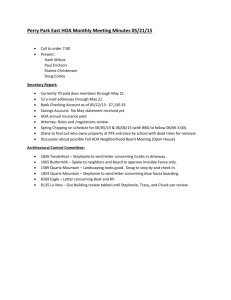
![Anti-HLA DQ3 antibody [2HB6] ab20174 Product datasheet Overview Product name](http://s2.studylib.net/store/data/012451218_1-1dc1c11f13a3c3487a61cb14278554ed-300x300.png)

